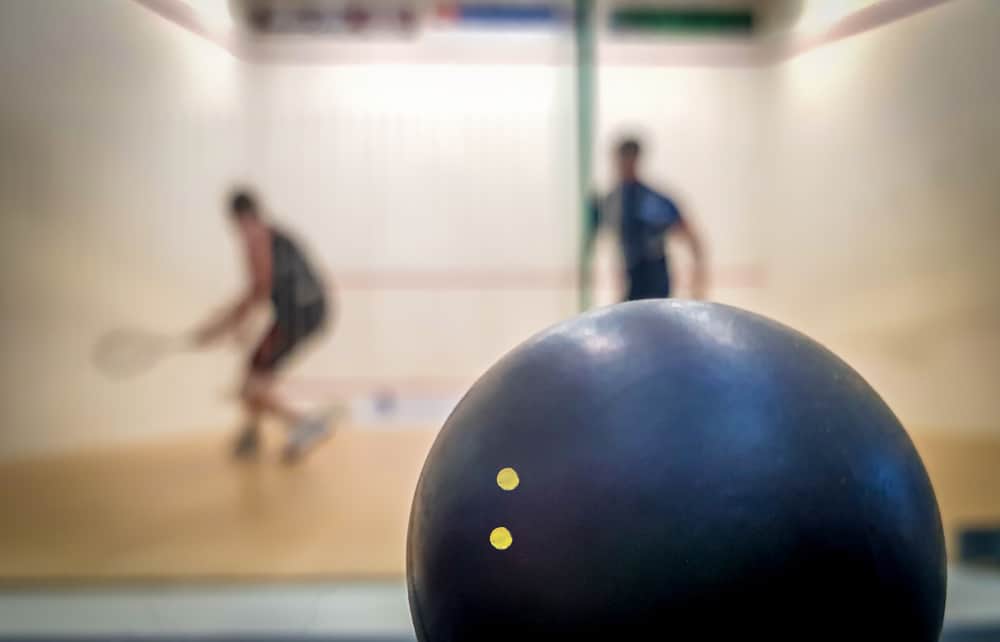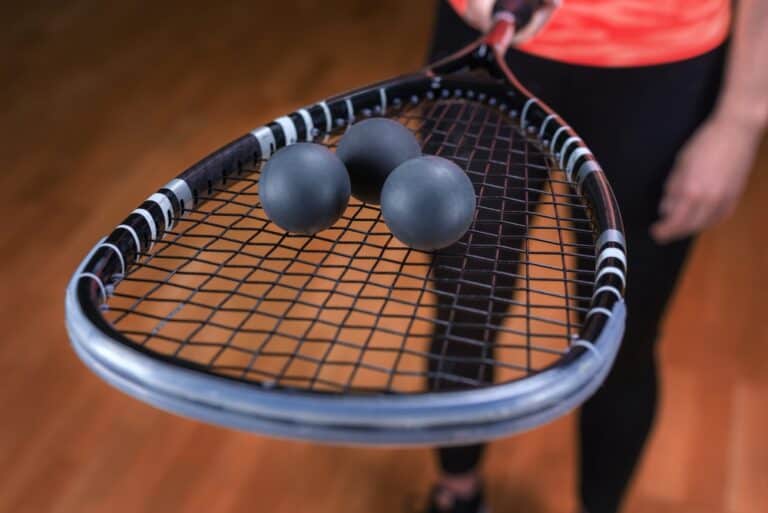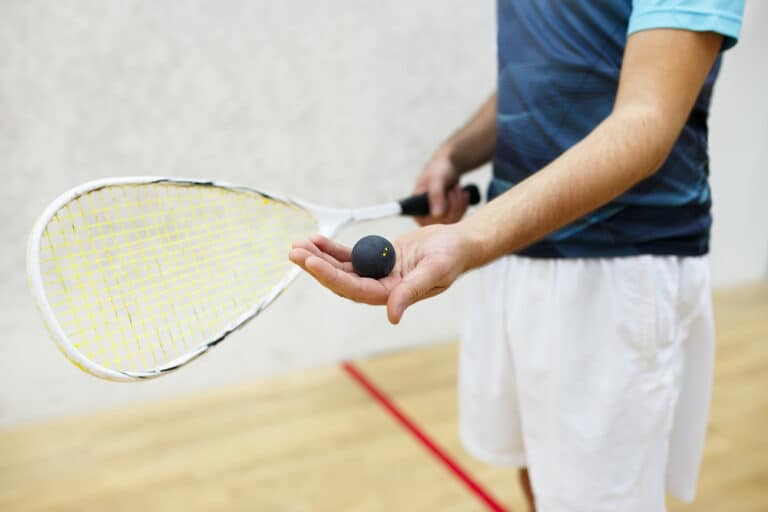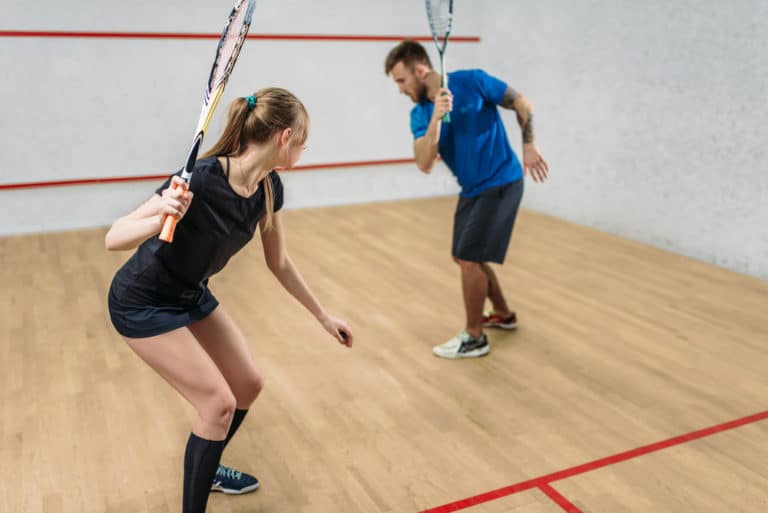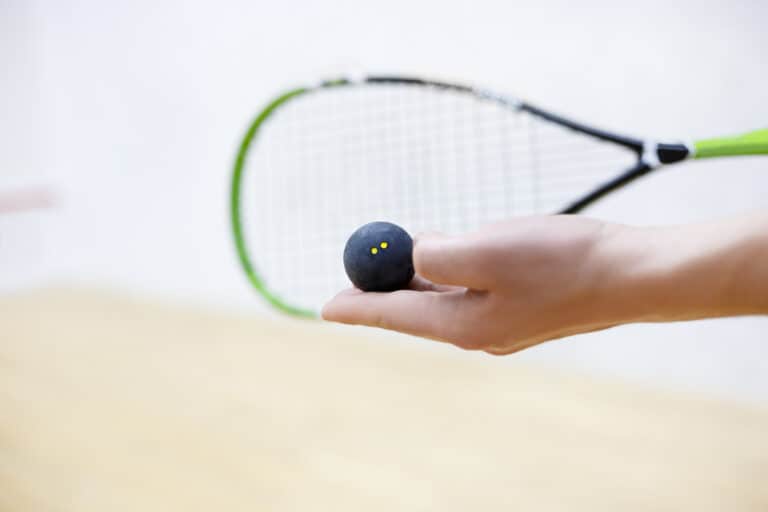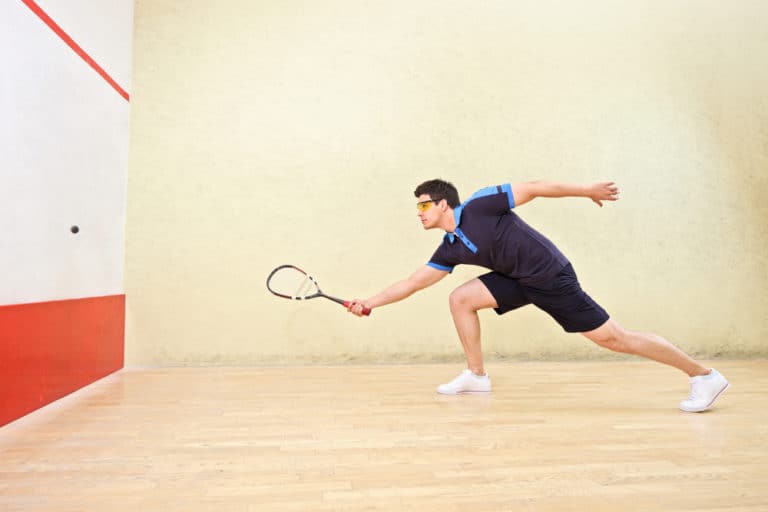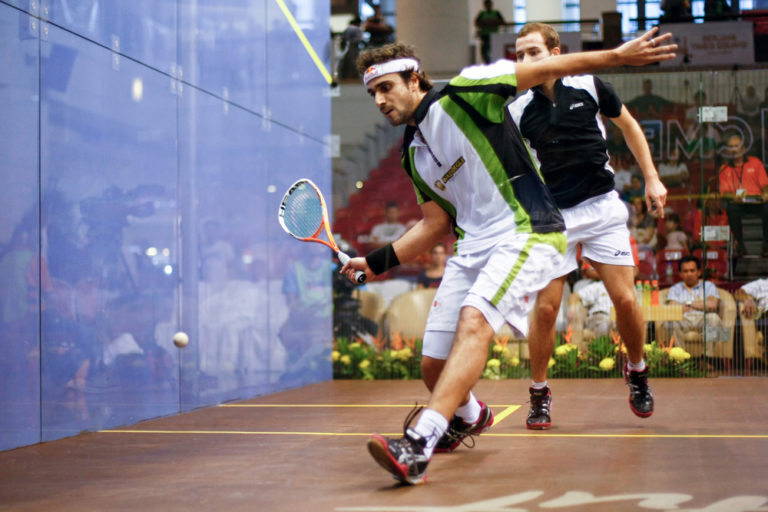How Is The Color Of a Squash Ball Related To Its Bounce?
Squash is an exquisite game to gain high fitness levels rapidly, especially if you remain consistent in how often you play. However, you may have noticed that different players use balls with varying colored dots on them, and you might have wondered what they mean, and you are right in thinking it has to do with the level of bounce they offer in play.
Blue dot squash balls will be far easier to bounce and offer greater hang time. As you level up in colors going from blue to red to eventually potentially playing with a yellow or double yellow ball, you will find that their tendency to bounce diminishes.
You will find different brands of balls, and there are also various colors that have different levels of bounce and are intended for varying levels of player ability. We will walk you through what the different colors mean and what this translates to regarding the balls’ likelihood of bouncing. So to find out more about what each dot color represents, be sure to read on.
The Meaning Behind The Color Dot On Squash Balls
Squash balls are unique compared to many other ball sports balls; at room temperature, a two-dot yellow ball, for example, will hardly bounce (if at all). They have to be warmed up before they can be put into play. Once they are sufficiently warm, they will bounce with ease, a truly unique aspect of squash and its balls.
Some sites will tell you that there are only three or four different squash balls with varying colors, but in reality, you can find up to six different types. Some are harder to find, and we will only discuss the four most common ones in this article. However, we shall give you an idea of what to expect from the other two.
As we have mentioned and you are now well aware of, the different colors on the balls delineate the level of bounce the ball offers. The colors represent the speed and hang time and what level of a player you should be to use them. The dot color is merely a representation, so you know what to expect of that specific ball.
As outlined in the table below, you will see that each dotted color ball is intended for different purposes, particularly the players’ experience involved in the game. You should be able to estimate what level you slot into, but if not, then perhaps seek the services of a squash instructor or coach, and they will be able to determine what color ball you should be using.
| Color | Bounce | Speed and Hang Time | Playing Level |
| Blue/White | High | Very high | Junior & New players |
| Red | Medium | High | Novices/Beginners |
| Green | Fairly slow | Average | Good players |
| Yellow | Relatively slow | Low | Advanced players |
| Double Yellow | Slow | Very low | Professional players |
| Orange | Incredibly low | Incredibly low | For high altitude |
As you will now know, four main types of balls are used in squash: blue/white, red, yellow, and double yellow dotted balls. Some are “reserved” for novices, while others should only be used by seasoned players. Below we shall break down what you can expect from each of these balls, and from there, you can decide on what level of squash ball you desire.
For example, the two-dot yellow ball is best reserved for the best players in the world. However, here is an interesting little fact, it also happens to be the most commonly sold and used ball, even among those who only play at a recreational level. This is slightly alarming as it is highly likely that instead of aiding them, it hinders their performance and may put them off squash all together.
These balls are far more difficult to warm up, and many beginners struggle to warm up the ball and keep it as such throughout play. This is owed to the ball needing to be struck hard repeatedly and frequently enough; if you hold a squash ball that has been in play on a professional level, it will be truly hot to the touch.
There are different manufacturers of squash balls; however, one of the most common brands that you will find most people using is the Dunlop brand. They offer superior quality, and you tend to get the best value for your money with this particular brand. Dunlop has four types of senior-level balls: Intro, Progress, Competition, and Pro.
The Intro level ball would be equivalent to the blue dot ball, and this one possesses 40% more bounce than the Pro level ones, which professional players use. The Progress ball, or red dot ball, offers 20% more bounce than the Pro, and the single yellow dot (Competition) gives a much less 10% extra bounce to it than the Pro ball.
The Blue/White Dot Squash Ball
If you are absolutely new to squash, then this is the ball that we recommend you use. It is also intended for junior players, but there is no shame in using the ball that has been specifically tailored for first-time players. This ball has the most bounce to it and hang time and will allow you to develop your hand-eye coordination while you master essential techniques properly.
You will also experience good rallies with this ball as it will not need to be played as hard as the more advanced balls. It will remain warm enough, and you will enjoy yourself far more on the court than had you opted for a more intermediate ball. Additionally, it offers 40% more bounce than the double yellow dot balls, which is a significant advantage during early play.
The Red Dot Squash Ball
Once you have learned the basics, can get around the court with more ease, and are beginning to get used to the sport, you can level up to the red dot ball. It is similar to the novice version and is intended for those still getting a grip on things. But you will have had a fair few sessions on the court by now.
This ball offers only 20% more bounce than the double yellow dot ball, but it is still a significant enough amount to give you that extra edge while playing. You will need to move quicker on the court and have more experience as the ball is firstly not going to bounce as easily as the blue, and the hang time is less.
The Yellow And Double Yellow Dot Squash Ball
When you have graduated from the red ball and feel that you have a good handle on the game and are moving swiftly around the court and might feel like the game is moving too slow for you, it is on to the yellow dot ball for you. It must be noted, though, that these are only ideal for skilled players, and you should strongly consider what level you are at before opting to use them.
The Yellow dot ball still offers a tad bit more bounce, sitting at 10%, than the double yellow ball, which some may find sufficient, while others prefer to stick to the red dot ball. Do not be tempted to move on to the double yellow balls too quickly, as many players tend to do, as these balls make for far more challenging play.
If you opt for them prematurely, you may hinder your progress as a squash player and find yourself irritated that you cannot play as well as you could with the other colors. The double yellow ball became the standard ball for professional competitions in 2001 when the World Squash Federation opted for them over the single yellow dot balls.
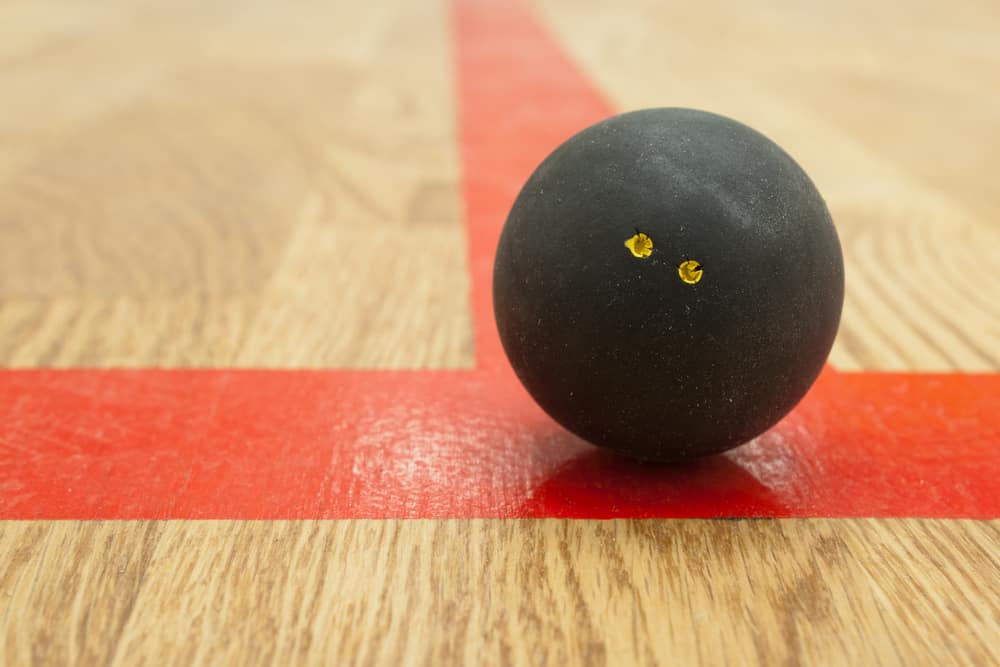
Conclusion
If you are just starting your squash journey, we highly recommend using the blue dot ball, especially if you are new to racket sports. If you have played similar sports, you can opt for a red dot ball, as both of these offer a more significant bounce percentage than the yellow and double yellow dot balls, which are preferred balls for advanced and professional players.
References
- https://www.playfinder.com/blog/what-the-dots-on-squash-balls-mean
- https://www.head.com/de_CH/squash/squash-how-tos/how-to-choose-the-right-squash-ball
- https://psaworldtour.com/news/view/3939/squash-balls-explained
- https://www.squashpoint.com/blogs/blog/how-to-choose-the-right-squash-ball/
- https://racketsportsworld.com/squash-balls-wiki/#Whats_a_Squash_Ball_Size

